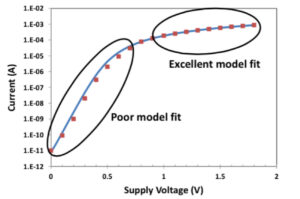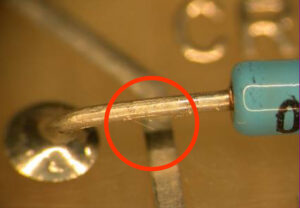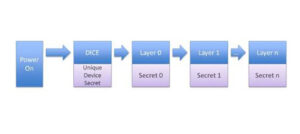An operating system (OS) is software that supports essential computer functions by managing software and hardware in a computer system. An embedded OS is typically tailored for a specific system and is usually as small as is necessary to do its job. You can find OSes in smartphones, routers, smart watches, game consoles, Alexa/Google Home, […]
basics
SSDs: secure erase or sanitize?
When you’re done with a data storage drive, it’s nice to make sure that all of the data is scrubbed from it. A drive that’s returned, repurposed, or discarded can have personal or confidential data on it. Discarded drives have been found with everything from financial and medical data, email, and even pornography on them. […]
802.11ax: Are we there yet?
Many who develop with microcontrollers have access to compatible Wi-Fi modules. Do you need to be concerned about updating to the latest version 802.11ax when it comes out? The answer depends on whether your MCU will reside in an area where the Wi-Fi access point is typically congested. If so, 802.11ax can help. In short, […]
IoT via Cellular: Out with 2G and 3G, in with LPWA
Wireless connections are convenient and cheap to set up, but Wi-Fi, Bluetooth, and other commercially available technologies do not always have the range needed. Wireless cellular is an option, but cellular connections are expensive. A lot of devices use 2G and 3G cellular technologies because they cost less, especially when only little chunks of data […]
Can you operate circuits at sub-threshold voltages?
Yes, you can operate circuits below the 0.9 volts where some transistors can run. The result is mind-blowingly low power consumption, as in a full-featured Real Time Clock (RTC) with a supply current below 14 nA (that’s nanoamps). First, some background on how transistors work Transistors operate much like an electronic switch. Apply voltage above […]
Tin whiskers: What happens when they spontaneously erupt?
First reported in the 1940s, Metal Whiskers (MW) are spider-web-thin conductive filaments that sprout (most often) from tin, zinc, and cadmium metal surfaces. A “tin whisker” can be manually formed with poor soldering techniques, but metal whiskers actually grow on their own, too. They are a phenomenon that many engineers are not aware of. Silver, […]
What is DICE architecture?
DICE stands for Device Identifier Composition Engine, and it is a security standard created by the Trusted Computing Group (TCG) which has been addressing security issues for years. TCG announced the establishment of DICE Architecture, or DICE Architecture Work Group to address the need for increased security in the Internet of Things (IoT) therefore targeting […]
SSDs vs. HDDs Part 2: Sand or Rust?
Solid State Drives (SSDs) are faster, more rugged, and (presently) more expensive than Hard Disk Drives (HDDs). When SSDs are priced competitively to HDDs, we will begin to see every PC equipped with an SSD for long-term storage, because SSDs are suitable for a decade or more of typical consumer use. SSD is just Flash […]
NFC Tag Basics: How to use for programming automation
Near Field Communication (NFC) is a wireless communication technology that acts over short distances for two-way communication. The use of NFC tags is growing in several markets, including the medical, consumer, retail, industrial, automotive, and smart grid markets. NFC is a type of Radio-Frequency Identification (RFID) technology. When two NFC enabled devices are very close […]
What are MRAMs?
MRAM, Magneto-Resistive Random Access Memory, is a type of non-volatile memory (NVM) capable of holding saved data even if the power is down or the power is accidentally cut off. MRAM — also called Magnetic RAM — is not new. It has been in the market for more than two decades, but there have been several […]










